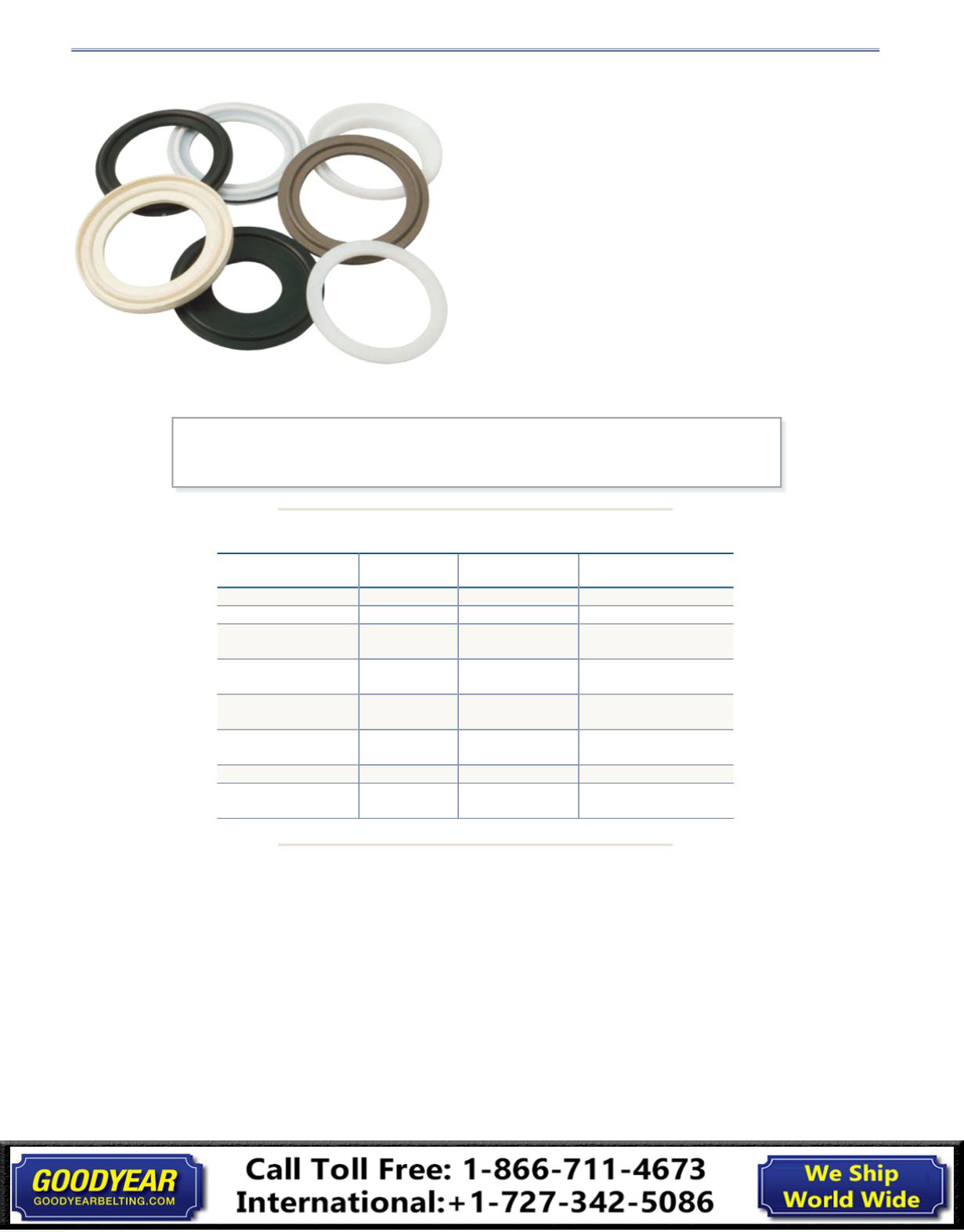

234
Dixon Sanitary 2016
800.789.1718
Technical
X
Sanitary Gaskets
Materials available:
• Nitrile (Buna N)
• Silicone (peroxide cured)
• EPDM
• FKM
• PTFE
Certified as required to:
• US Pharmacopoeia Class VI
Cytotoxicity Criteria
• Title 21CFR177.2600 & .1550
• USDA and 3A Sanitary Standards
All elastomeric gaskets require periodic replacement. Gasket life is influenced by the gasket material, product
application, temperature, cleaning procedures, etc. After monitoring gasket conditions in a process system, a
schedule should be developed for replacement of gaskets.
Elastomer
Part Number
Identifier
Color Code
Useful Temperature
Buna-N
U
1 red dot
-25°F to 225°F
White Buna-N
UW
1 red dot
-25°F to 225°F
EPDM
peroxide cured
E
3 green dots
-40°F to 275°F
FKM
SFY
1 white dot
1 yellow dot
-15°F to 375°F
Silicone
peroxide cured
XW
1 pink dot
-50°F to 400°F
Silicone
peroxide cured
XC
none
-50°F to 400°F
PTFE
G
none
-10°F to 300°F
PTFE
w/50% 316 particles
GTS
none
-20°F to 450°F
Color Coding - Identification of Gasket Materials
Packaging and Storing Information
The shelf life of rubber gaskets is the maximum period from cure date to the date the product is installed. During the shelf life
time, the rubber product is expected to retain its characteristics under the following conditions:
•
stored in original packaging in a clean, dry warehouse
•
not exposed to direct sunlight
•
stored no closer than 6 feet from electric motors
•
temperature between
65°F to 85°F
A guideline for shelf life of rubber gaskets manufactured from the following components should have the following shelf life not to
exceed:
•
Buna
10 years
•
EPDM
10 years
•
FKM
10 years
•
Silicone
5 years
•
PTFE
20 years


















